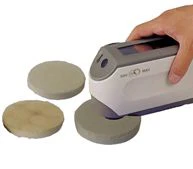Color Control of Ceramic Tiles

Ceramics are non-metallic solids that are subjected to high temperature in the kilns to make it harder, denser and less porous for use in both indoors and outdoors. When it comes to ceramic tile making, the process generally involves the use of raw materials such as clay, silica, quartz, feldspar and zirconium.
It all begins in the procurement of raw materials that are impure clay materials mined from natural earth deposits or prepared by chemical fusion to produce ultra-high purity powders. In today’s ceramic industry, manufacturers work with their raw material suppliers to ensure that specification are met before the materials are used. With the help of color measuring instruments, they can now grade the quality of raw materials that are procured.
To determine the quality of raw material, samples are first taken to make ceramic bisques before sending for physical analysis and laboratory tests. Color classification is important as raw materials are priced differently according to their color. It is recommended to check and sort them according to its L* and b* values which represents the amount of lightness and yellowness.
The Konica Minolta Spectrophotometer CM-2500d is an instrument that is able to measure the ceramic bisques based on their CIE L*a*b* values. Generally for feldspar, a high lightness value (L* > 78) and (b* range of 4 to 5) is classified as Grade A material and can be used to manufacture premium ceramic products.

Click here or contact us at +65 6563 5533 to speak with our color specialists to understand more about the different grades of ceramic raw materials and how it affects the production yields of ceramic tiles.
